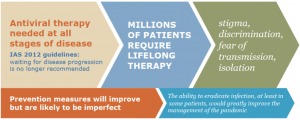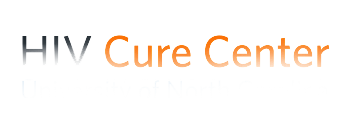Research Interests
HIV cure is a new effort at the forefront of research and the UNC HIV Cure Center is focused on this new research effort and working toward finding a cure for HIV. Curative research is long-term, costly, and has extraordinarily high risks and the path to a cure is not clear.

HIV infection is a serious health issue, affecting over 30 million people worldwide with millions of new cases reported each year. While highly active antiretroviral therapy (HAART) has offered the opportunity for infected individuals to achieve relatively normal life expectancies, there is as of yet no cure. Further, treatment is expensive, must be adhered to for the remainder of the infected individual’s life, may be accompanied by significant side effects, and is not universally available in all regions of the world. Thus, the search for a cure for HIV infection remains a top priority of health organizations worldwide.

Learn more:
https://www.nature.com/news/hiv-rebound-dashes-hope-of-mississippi-baby-cure-1.15535
https://www.aumag.org/2016/10/06/timothy-ray-brown-cover/
https://www.sciencemag.org/news/2014/09/how-did-berlin-patient-rid-himself-hiv
Our research focuses on reversal of HIV latency, understanding the molecular mechanisms behind HIV persistence, and the development of novel agents to clear the infection that can be combined with latency reversal strategies. Our team includes scientists and clinicians all harnessing their diverse experiences and expertise to achieve a better understanding of HIV latency and address many of the remaining roadblocks to a cure.
Future: Although the challenges of latent HIV-1 infection are daunting, the stability of the latent pool over years of antiviral therapy gives hope that an effective perturbation of the homeostasis that maintains the latent pool may allow substantial depletion, and eventually eradication, of persistent infection. The steady advances in animal models of HIV-1 latency, tools for the assessment of persistent infection, LRAs to disrupt latency, and emerging immunotherapies to clear persistently infected cells suggest that the first effective combination studies may be close at hand. Such studies will likely represent progress toward the goal of HIV-1 cure while also revealing new challenges to be overcome.

